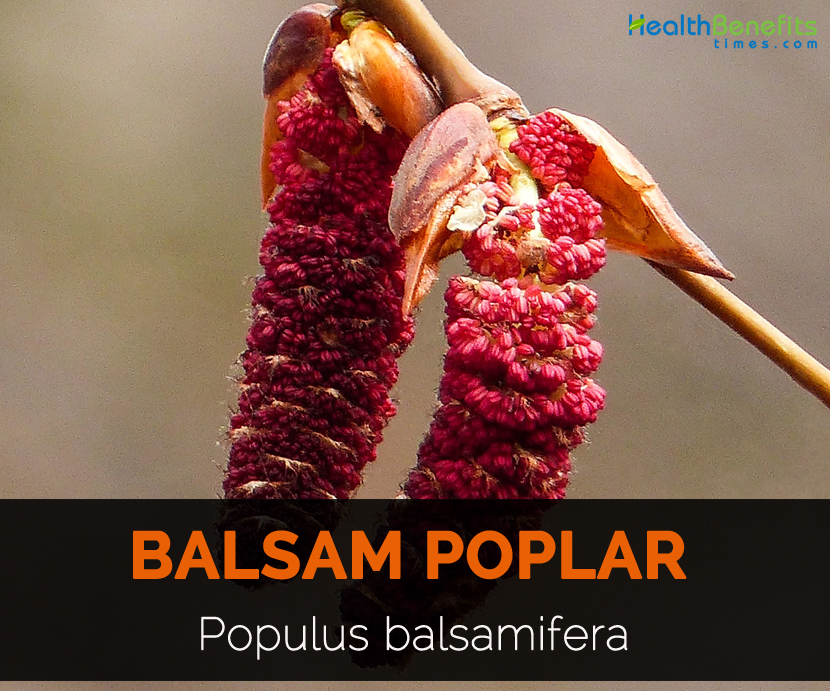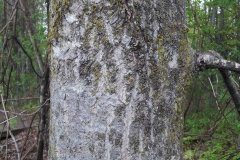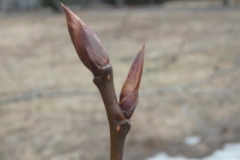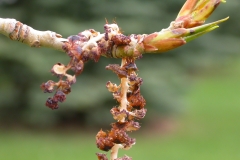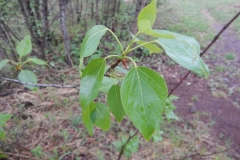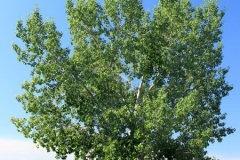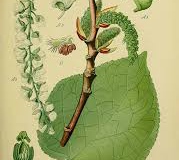| Balsam poplar Quick Facts | |
|---|---|
| Name: | Balsam poplar |
| Scientific Name: | Populus balsamifera |
| Name | Balsam poplar |
|---|---|
| Scientific Name | Populus balsamifera |
| Common/English Name | Balsam Poplar, Black cottonwood, Common black cottonwood, Western balsam poplar, Balsam cottonwood, California poplar, Bam, Eastern balsam-poplar, Bamtree, Hackmatack, Tacamahac poplar, Tacamahaca, Cottonwood, Heartleaf balsam poplar |
| Name in Other Languages | German: Balsam-Pappel, Balsampappel, Echte Balsam-Pappel; Lithuanian: Balzaminė tuopa; English: Eastern Balsam-poplar, Balsam poplar, Bamtree, Eastern balsam poplar, Hackmatack, Tacamahac poplar |
| Plant Size | 25 m tall |
| Bark | Dark furrowed |
| Flowering Season | April and May |
Uses
The buds are used as a stimulating expectorant for all conditions affecting the respiratory functions when congested. In tincture they have been beneficially employed in affections of the stomach and kidneys and in scurvy and rheumatism, also for chest complaints. The bark is known to be tonic and cathartic and will prove of service in gout and rheumatism.
Dose
Tincture of the buds, 1–4 fl. drams in water as needed. As a tea, 1 teaspoonful of the buds to 1 cupful of boiling water.
Externally
The buds are chiefly used in the form of ointments and plasters for counter-irritant purposes.
Culinary uses
- Dried inner bark is grounded into powder and used as a thickener in soups.
- Add it to cereals for making bread.
- Catkins are consumed raw or cooked.
Medicinal uses
- North American Indian tribes use it for treating various complaints such as skin problems and lung ailments.
- Leaf buds are antiseptic, antiscorbutic, expectorant, diuretic, tonic and stimulant.
- Use resin as a salve and wash for sores, wounds and rheumatism.
- Make it into tea and use it as a wash for sprains, muscle pains and inflammation.
- Use the tea internally for lung ailments and coughs.
- Put the buds in hot water and use it as an inhalant for providing relief from congested nasal passages.
- Bark is used for treating fevers and rheumatism and also provides relief from pain of menstrual cramps.
- Use the tea made from inner bark as eye wash and for treating scurvy.
- Rub the extract to skin diseases and also to relieve teething pain in babies.
References:
https://www.itis.gov/servlet/SingleRpt/SingleRpt?search_topic=TSN&search_value=22453#null
https://pfaf.org/user/Plant.aspx?LatinName=Populus+balsamifera
https://plants.usda.gov/plantguide/pdf/pg_pobat.pdf
https://en.wikipedia.org/wiki/Populus_balsamifera
https://plants.usda.gov/core/profile?symbol=POBA2
http://www.borealforest.org/trees/tree11.htm


